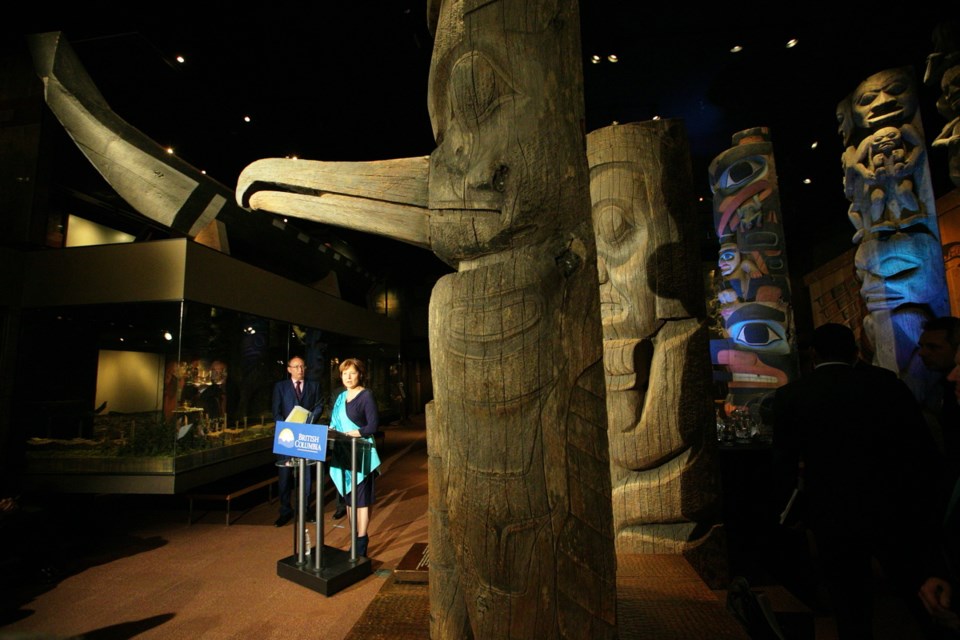The Royal B.C. Museum and First Nations are embarking on an initiative to repatriate ancestral remains and artifacts to their rightful indigenous homes.
Premier Christy Clark announced Wednesday a $2-million commitment for the project during the Cabinet-First Nations Leaders Gathering in Vancouver.
The Royal B.C. Museum will act as a resource for First Nations peoples who are interested in seeing the return of cultural objects lodged in museums in B.C., Canada and around the world. Those objects were often taken away without the permission of First Nations.
Jack Lohman, director of the Royal B.C. Museum, said the museum will join forces with indigenous peoples, but they will take the lead. “This whole process will be guided by and led by indigenous peoples.”
One of the first steps will be a memorandum of understanding between the museum and the First Peoples Cultural Council, a group immersed in the preservation and revitalizing of First Nations culture, notably native languages.
The museum will act as a secretariat for native peoples to bring home sacred objects.
“It provides a very important mechanism, a significant mechanism to enable, even intensify this work,” said Lohman. “In a way, it’s attaching concrete action to empathy.”
Some museums have already returned pieces:
• The American Museum of Natural History returned ancestral remains to the Tseycum First Nation in 2008.
• The Museum of Ethnography in Stockholm returned a totem pole to the Haisla Nation in 2006.
• The Burke Museum in Seattle returned a stone statue to the Sto:Lo First Nation in 2006.
Lohman said the initiative should not be seen as a something that will “empty out museums.”
For example, the Royal B.C. Museum has good relations with First Nations peoples in B.C. Many view the museum as a safe haven for artifacts important to their cultures.
He said it’s time for all museum specialists to think in a way that reflects a new empathy for all peoples. “We are talking about things that have got tremendous meaning and attached memory, both sacred and spiritual,” said Lohman. “This is where First Nations will have to guide the process,” he said. “It’s working with the First Nations will allow us to continue in this work legitimately.”
In a statement, Chief Marilyn Slett from the Heiltsuk Nation of the Central Coast, said the return of sacred treasures is an important part of reconciliation. “Our elders have told us that our treasures must be returned to our community in order for community healing to continue. We look forward to establishing a strong relationship with the Royal B.C. Museum to continue the process of having our treasures returned home.”



